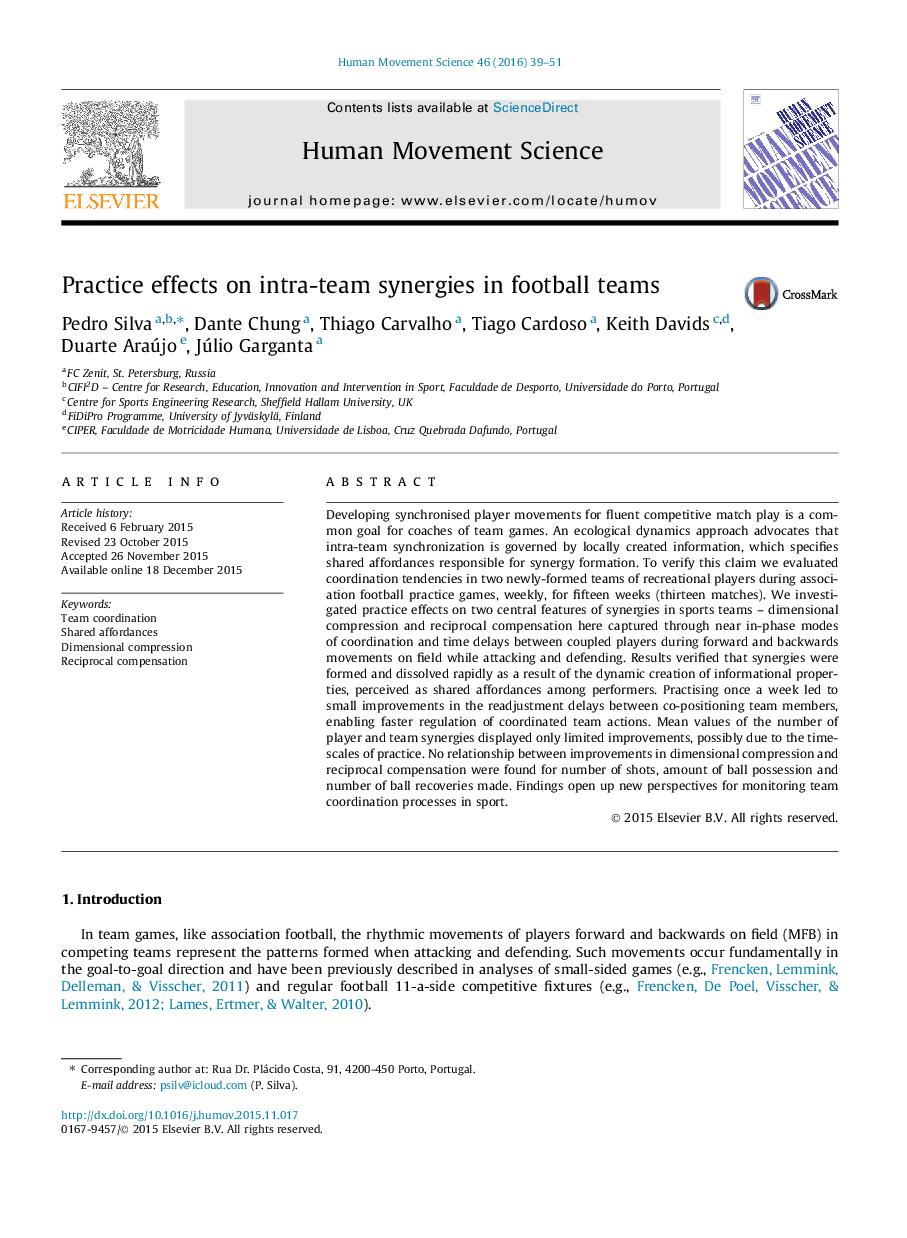| Article ID | Journal | Published Year | Pages | File Type |
|---|---|---|---|---|
| 928204 | Human Movement Science | 2016 | 13 Pages |
•Moving teammates provide informational properties that invite actions.•Practice improved faster reestablishment of team synergies.•Analysis of synergies can be used to evaluate team performance.
Developing synchronised player movements for fluent competitive match play is a common goal for coaches of team games. An ecological dynamics approach advocates that intra-team synchronization is governed by locally created information, which specifies shared affordances responsible for synergy formation. To verify this claim we evaluated coordination tendencies in two newly-formed teams of recreational players during association football practice games, weekly, for fifteen weeks (thirteen matches). We investigated practice effects on two central features of synergies in sports teams – dimensional compression and reciprocal compensation here captured through near in-phase modes of coordination and time delays between coupled players during forward and backwards movements on field while attacking and defending. Results verified that synergies were formed and dissolved rapidly as a result of the dynamic creation of informational properties, perceived as shared affordances among performers. Practising once a week led to small improvements in the readjustment delays between co-positioning team members, enabling faster regulation of coordinated team actions. Mean values of the number of player and team synergies displayed only limited improvements, possibly due to the timescales of practice. No relationship between improvements in dimensional compression and reciprocal compensation were found for number of shots, amount of ball possession and number of ball recoveries made. Findings open up new perspectives for monitoring team coordination processes in sport.
